#African food systems
Explore tagged Tumblr posts
Text
From Research to Reality: How 5 African Women Scientists Are Solving Food Security Challenges
Across Africa, an inspiring story is unfolding. Women scientists who have personally witnessed their communities struggle with scarce resources – from water shortages to lack of nutritious food – are stepping forward with solutions. Having experienced these challenges first-hand, they’re combining their scientific expertise with deep local understanding to tackle problems they’ve seen affect…
#aflatoxin contamination#African crop yields#African farming innovations#African food processing techniques#African food security solutions#African food systems#African traditional crops#African women entrepreneurs#African women in climate action#African women in community resilience.#African women in crop health#African women in education#African women in food systems#African women in innovation#African women in livestock management#African women in nutrition#African women in science#African women in sustainability#African women in technology#African women mentors#African women researchers#African women scientists#Agnes Otwani#Asero Diana#bio-based solutions Africa#cassava nutrition#climate change and agriculture#climate-resilient farming#Dorah Momanyi#Eden Lencha
0 notes
Text
#blacklivesmatter#veganism#food#food sovereignty#food security#diet#climate change#food systems#NPR#WYSO#black community#african american#black people
52 notes
·
View notes
Text
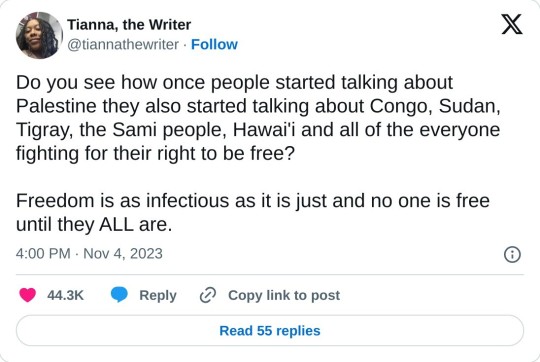
People & countries mentioned in the thread:
DR Congo - M23, Cobalt
Darfur, Sudan - International Criminal Court, CNN, BBC (Overview); Twitter Explanation on Sudan
Tigray - Human Rights Watch (Ethnic Cleansing Report)
the Sámi people - IWGIA, Euronews
Hawai'i - IWGIA
Syria - Amnesty International
Kashmir- Amnesty Summary (PDF), Wikipedia (Jammu and Kashmir), Human Rights Watch (2022)
Iran - Human Rights Watch, Morality Police (Mahsa/Jina Amini - Al Jazeera, Wikipedia)
Uyghurs - Uyghur Human Rights Project (UHRP) Q&A, Wikipedia, Al Jazeera, UN Report
Tibetans - SaveTibet.org, United Nations
Yazidi people - Wikipedia, United Nations
West Papua - Free West Papua, Genocide Watch
Yemen - Human Rights Watch (Saudi border guards kill migrants), Carrd
Sri Lanka (Tamils) - Amnesty International, Human Rights Watch
Afghans in Pakistan - Al Jazeera, NPR
Ongoing Edits: more from the notes / me
Armenians in Nagorno-Karabakh/Azerbaijan (Artsakh) - Global Conflict Tracker ("Nagorno-Karabakh Conflict"), Council on Foreign Relations, Human Rights Watch (Azerbaijan overview), Armenian Food Bank
Baháʼís in Iran - Bahá'í International Community, Amnesty, Wikipedia, Minority Rights Group International
Kafala System in the Middle East - Council on Foreign Relations, Migrant Rights
Rohingya - Human Rights Watch, UNHCR, Al Jazeera, UNICEF
Montagnards (Vietnam Highlands) - World Without Genocide, Montagnard Human Rights Organization (MHRO), VOA News
Ukraine - Human Rights Watch (April 2022), Support Ukraine Now (SUN), Ukraine Website, Schools & Education (HRW), Dnieper River advancement (Nov. 15, 2023 - Ap News)
Reblogs with Links / From Others
Indigenous Ppl of Canada, Cambodia, Mexico, Colombia
Libya
Armenia Reblog 1, Armenia Reblog 2
Armenia, Ukraine, Central African Republic, Indigenous Americans, Black ppl (US)
Rohingya (Myanmar)
More Hawai'i Links from @sageisnazty - Ka Lahui Hawaii, Nation of Hawai'i on Soverignty, Rejected Apology Resolution
From @rodeodeparis: Assyrian Policy Institute, Free Yezidi
From @is-this-a-cool-url: North American Manipur Tribal Association (NAMTA)
From @dougielombax & compiled by @azhdakha: Assyrians & Yazidis
West Sahara conflict
Last Updated: Feb. 19th, 2024 (If I missed smth before this, feel free to @ me to add it)
#resources#important#congo#sudan#tigray#sámi#hawai'i#syria#kashmir#iran#uyghurs#china#tibetans#yazidi#west papua#yemen#sri lanka#afghans in pakistan#pakistan#human rights#palestine#twitter#lmk if there's a better reource or I linked smth wrong. I am very tired#my posts#genocide#social justice#nagorno karabakh#Bahá'í#kafala system#qatar
46K notes
·
View notes
Text
Dandelion News - March 15-21
Like these weekly compilations? Tip me at $kaybarr1735 or check out my Dandelion Doodles! This month’s doodles, like every third month, will be free to the public, so take a look!
1. Zoo 'overjoyed' as lion cubs increase pride to 10
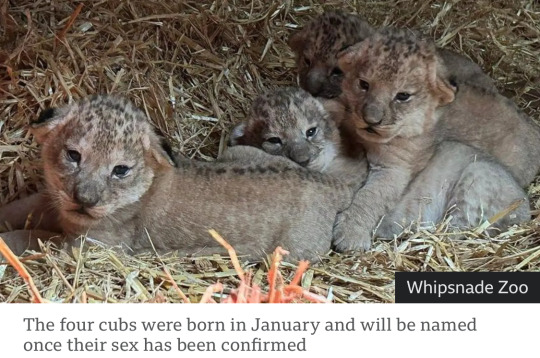
“The litter of rare northern African lions was the second batch to be born recently at Whipsnade Zoo in Bedfordshire, after three arrived in November. […] "The youngsters will grow up side-by-side with their half-siblings, and I'm sure they'll love having an abundance of playmates."”
2. Ohio Appeals Court Rules Trans Care Is Healthcare, Strikes Down Ban For Trans Youth
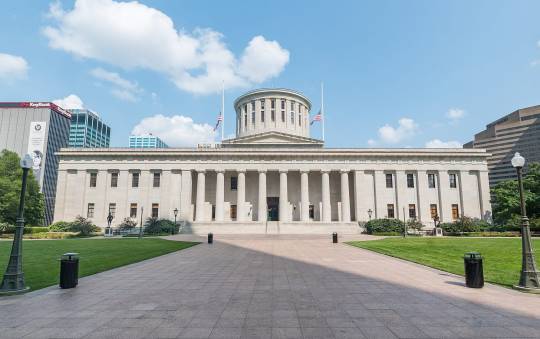
“The ruling rested on two key findings: first, that gender-affirming care constitutes legitimate medical treatment, and second, that parents have the constitutional right to make healthcare decisions for their children.”
3. Oystercatcher Recovery Campaign Offers a Rare Success Story about Shorebird Conservation
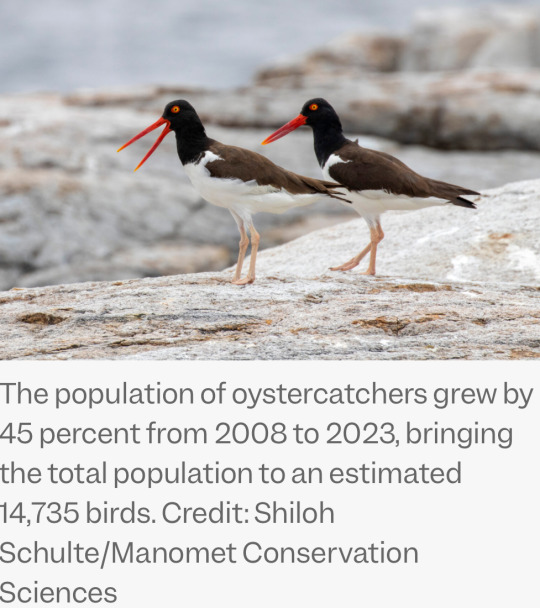
“Fifteen years of coordinated conservation efforts have produced a significant recovery in the U.S. population of the American oystercatcher[….] Schulte predicted that the protection efforts will survive [federal funding cuts] because of the large number of non-federal partners involved.”
4. Fish-tracking robot aims to make fishing more sustainable in developing nations

“A solar-powered, transparent [robot] that can roam the waters autonomously for five days at a stretch, counting fish [… can help fishers] avoid the overfishing [… and] mean less fuel consumed by boats searching for schools of fish, and less degradation of nets due to trawling where there are no fish.”
5. Zoologist Rediscovers Grasshopper Species Believed Extinct
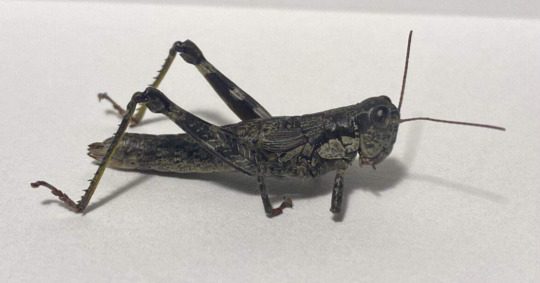
“[… T]he Appalachian grasshopper […] camouflages with its surroundings—perhaps part of the reason people haven’t seen it [since 1946]. [… A zoologist] had seen some reports on iNaturalist that he thought could have been the species[, …] and after surveying several locations, he found a female.”
6. Scaling agroforestry can support fisheries, local food production and cultural practices
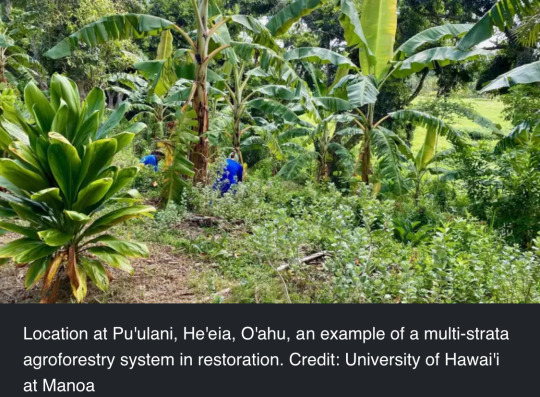
“The research found that combining native forest protection (100,000 acres) with transitioning suitable fallow agricultural land to agroforestry (400,000 acres) could [reduce] erosion and boosting nearshore food production by almost 100,000 meals per year[….]”
7. A cell pulls off one of the 'Holy Grails' of biotechnology
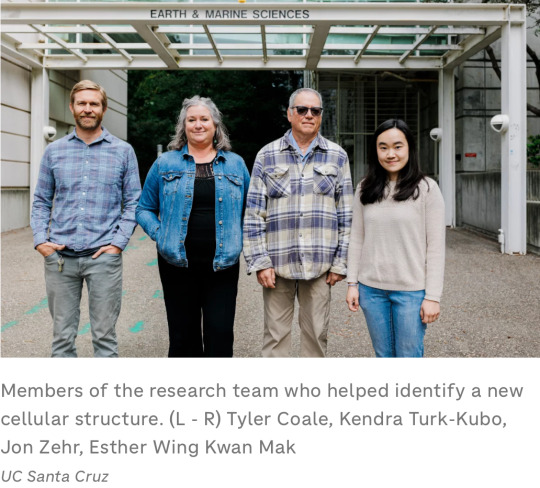
“[… A] single-celled alga with a nucleus [… can conduct] a chemical conversion reaction that helps create some of the essential building blocks of life. […] One day, Capone says the nitroplast could be introduced to crops to allow them to convert their own nitrogen without relying on external fertilizer.”
8. FERC: Solar + wind set for a strong 3-year run despite Trump’s sabotage

“Solar accounted for 68.2% of all new generating capacity placed into service in January – more than double the solar capacity added a year earlier (1,176 MW). […] Around 30% of US solar capacity is in small-scale (e.g., rooftop) systems that are not reflected in FERC’s data.”
9. As ghost junk haunts the sea, ‘mermaids’ are fighting back

“Just two days after completing the training, Diana Garcia, one of the Sirenas, helped remove nearly 900 kilograms (2,000 pounds) of [abandoned] ghost gear and debris in the waters near her community[….]”
10. A Nest-Protecting Program Pays Off for Alabama’s Snowy Plovers
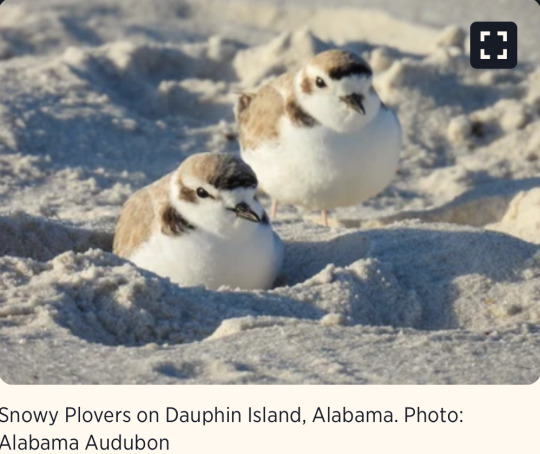
“Over the past two breeding seasons, 18 Snowy Plover chicks fledged—a major turnaround after five years of almost no chick survival. [… The team made] a concerted effort to educate the public about the need to give the birds space[, … and] people have not directly caused plover losses in Alabama recently[….]”
March 8-14 news here | (all credit for images and written material can be found at the source linked; I don’t claim credit for anything but curating.)
#hopepunk#good news#nature#zoo#lion#baby animals#us politics#ohio#trans rights#trans healthcare#healthcare#birds#conservation#fishing#sustainability#grasshopper#insect#extinction#inaturalist#agroforestry#hawai'i#hawaii#biotechnology#algae#symbiosis#nitrogen fixation#solar#solar energy#solar power#endangered species
682 notes
·
View notes
Text
Everyone in the batfamily can handle spice except for, and hear me out on this, Alfred Pennyworth.
Bruce travelled Asia for years with Minhkhoa Khan. There is no way that man cannot handle his spice, he would've never lived it down.
Dick grew up in a circus with a whole variety of cultural foods and he's romani. He can definitely down insane amounts of spice without flinching.
Jason couldn't at first, because of his weak system from living in poverty / on the streets, but now? He's just...like that. He just can. No one knows how. It was probably the lazarus pit tbh, so his hereditary mexican taste buds are shining through now.
Tim taught himself how to withstand spice just out of spite. He refused to be the only person to be unable to tolerate it. Also, his team and him regularly have competitions on who can eat the spiciest food.
It was part of Cass's training to be able to eat carolina reapers without a reaction so her taste buds are basically immune to any and all spice by this point.
Damian is a middle eastern boy who grew up in the LoA. That's all that needs to be said there I think.
Duke and Steph can also tolerate spicy food. Steph because she's also just like that™. She will either eat the sweetest thing around or the spiciest thing around and there's no in between ever. Duke can't tolerate extreme levels of spice but he's definitely grown up eating African dishes made by his parents so he can eat foods with chilli.
Alfred though. He's an old (😓), english, white man who's lived most of his life inside a manor. I believe he just flat out refuses to eat anything with chillies in it and makes a separate dish for himself. Also, I think it'd be funny if everyone was eating the hottest, spiciest, throat burning meal, and he was just sitting there with his cup of tea and jacket potato.
#bruce wayne#dc#dc comics#dick grayson#tim drake#jason todd#damian wayne#duke thomas#cassandra wayne#stephanie brown#alfred pennyworth#romani dick grayson#mexican jason todd#4sh-n4
2K notes
·
View notes
Text

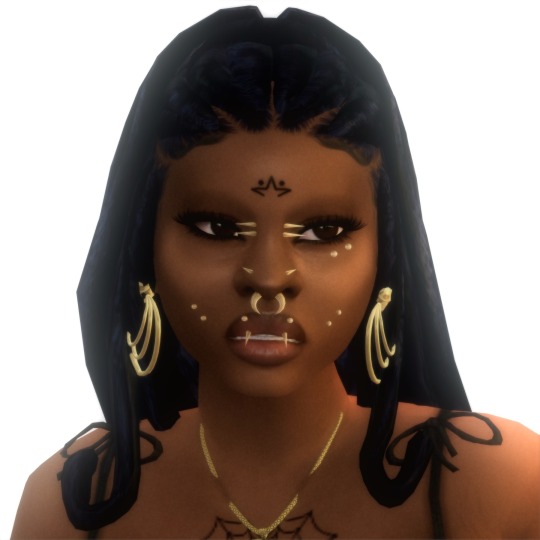

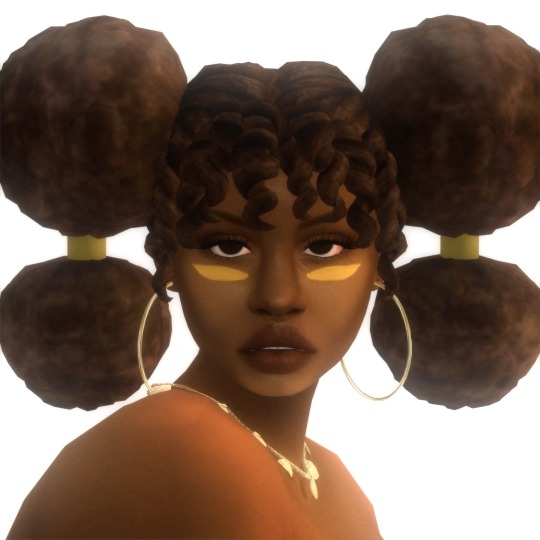
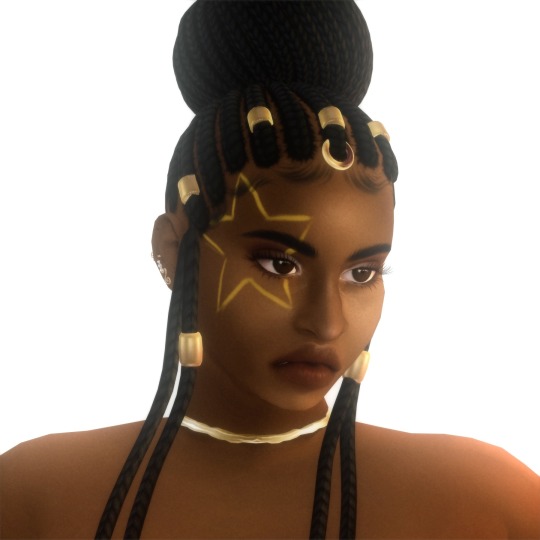
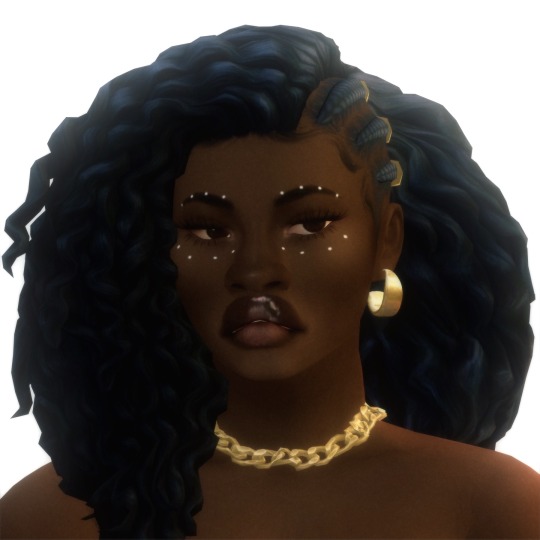


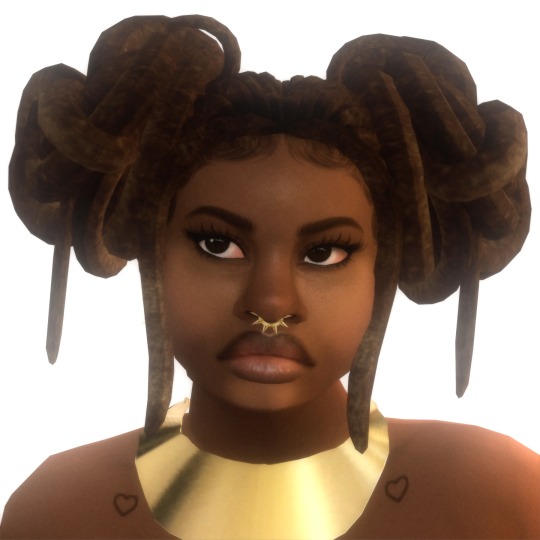
afrofuturism🪐
☆ one ~ solange hair by darknightt (tsr warning) ☆ two ~ loretta hair by @simtric ☆ three ~ bahati braids by @sheabuttyr ☆ four ~ isonoe hair by octetsica ☆ five ~ binah braids by @sheabuttyr ☆ six ~ cornrows & curls hair by @leeleesims1 ☆ seven ~ indie hair by @sashima ☆ eight ~ loc petals by @shespeakssimlish ☆ nine ~ mnemosyne hair by octetsica ☆
mini dedication essay to black simmers and ts4 creators below! pls read if you have the chance! <3
this edit is a small homage to afrofuturism and the various unique black hairstyles (and especially the black creators of most of these hairs) that i have downloaded and admired over the years! some of these are old and some of these are new.
to me, afrofuturism means constantly honoring/reclaiming/challenging the past while constantly creating/dreaming of a better society/world/future. a society/world/future that embraces and empowers all of our differences, ingenuity, aspirations, and unique lived/cultural experiences. a society/world/future that does not limit us through the various systems of marginalization and oppression (racism, homophobia, transphobia, fatphobia, sexism, xenophobia, ableism, classism, colorism, etc.) that often affects how we, as black people, live today.
blackness is so diverse and intricate yet it's always been a struggle to find my culture within a game that's known for being so limiting, bland, and extremely eurocentric when it comes to hairstyles, clothing, food traditions/events, etc. black simmers have always had to figure out how to make this game more inclusive and make it resemble either more like how our ancestors lived, how our current lives are, or how we would want our lives (and even our children's lives) to look like in the future no matter how dystopian the real world look and feel now. fortunately, these hairs and their uniqueness bring a huge sense of culture and style to this game. they have always inspired me and made me feel extremely proud to a part of the lovely african diaspora (and the ever-growing black simmer community).
in a way, being a black simmer and cc creator usually means that we are often digitally creating our own worlds as afrofuturists to varying degrees (whether we know it or not) every time we open our game, make our sims, make houses, and/or make black cultural cc. also, now i know that cc making is not easy to do and is extremely time-consuming so this post is also just me giving all black cc creators especially those who create for free their well-deserved flowers! here are some other black cc creators who created cc that have greatly impacted my game since i first started playing sims 4: @/leeleesims1 @/simtric @/hi-land @/yuyulie @/sims4bradshaw @/ebonixsims @/xmiramira @/sheabuttyr @/qwertysims @/oplerims @/sleepingsims @/shespeakssimlish and so many more im forgetting probably (im too shy rn to tag ppl but i greatly appreciate y’all fr i hope y’all telepathically get this message somehow 😭).
last but not least, i am hoping that this inspires somebody to keep creating or start creating regardless of what they think their skill level is! somebody will absolutely fall in love with your work and/or your art/work will 100% change someone's game forever <333
#ts4#sims 4#the sims 4#black simblr#black simmer#ts4 edit#🪐#🪐 black hair#soleil jones#xolani souza de oliveira#angela evans#leona morrison#chantelle diang#ayesha solomon#nylah rivers#nykhor chantelle diang#dove adeyemi#something to end black history month with!#i really hope my essay make sense 😭😭😭#i planned to this last year but hated the pictures i took so i scraped it and redid it#i couldn’t thank enough to all the black cc creators before me and hope to help/inspire new black cc creators 🙏🏾#this is also kinda the updated version of my for the culture post…i made sure to include some familiar (but updated) faces 😭☝🏾💗🙈
2K notes
·
View notes
Text
Mukiibi farmed in Uganda but is now the president of Slow Food International, promoting more sustainable production and consumption globally. There have been challenges, he says, with agriculture giants claiming agroecology cannot deliver at scale. He believes this message is undermining and unwelcome, and that the agroecology movement is having success across Africa. “I’ve travelled to more than 30 African countries, meeting farmers in the communities, and many express the fear and worry that they cannot catch up with the seed system controlled by big business,” says Mukiibi. “It is so important not to lose the argument because then we hand our future to the corporations and their intention is not to feed anyone. “It is to feed their revenue streams, to stamp their control over food and to dictate who should produce what and when.”
605 notes
·
View notes
Text
Round 3 - Mammalia - Rodentia




(Sources - 1, 2, 3, 4)
Our next and last order of the Glires clade is the Rodentia. Rodentia is the largest order of mammals, with about 40% of mammal species being rodents. Rodentia is comprised of the families… *deep breath*… Anomaluridae (“scaly-tailed squirrels”), Zenkerellidae (“Cameroon Scaly-tail”), Pedetidae (“springhares”), Castoridae (“beavers”), Geomyidae (“pocket gophers”), Heteromyidae (“kangaroo rats/mice” and “pocket mice”), Ctenodactylidae (“gundis”), Diatomyidae (“Laotian Rock Rat”), Bathyergidae (“African mole-rats”), Heterocephalidae (“Naked Mole-rat”), Hystricidae (“old world porcupines”), Petromuridae (“Dassie Rat”), Thryonomyidae (“cane rats”), Chinchillidae (“chinchillas” and “viscachas”), Dinomyidae (“Pacarana”), Caviidae (“cavies”), Dasyproctidae (“agoutis” and “acouchis”), Cuniculidae (“pacas”), Abrocomidae (“chinchilla rats”), Ctenomyidae (“tuco-tucos”), Echimyidae (“Nutria”, “spiny rats”, and “hutias”), Octodontidae (“degus” and kin), Erethizontidae (“new world porcupines”), Dipodidae (“jerboas”), Sminthidae (“birch mice”), Zapodidae (“jumping mice”), Calomyscidae (“mouse-like hamsters”), Cricetidae (“hamsters”, “voles”, “lemmings”, “muskrats”, and “new world rats/mice”), Muridae (“true rats/mice” and “gerbils”), Nesomyidae (“Malagasy rats/mice”, “climbing mice”, “African rock mice”, “swamp mice”, “pouched rats”, and “White-tailed Rat), Platacanthomyidae (“spiny dormice” and “Chinese pygmy dormice”), Spalacidae (“mole-rats”, “bamboo rats”, and “zokors”), Aplodontiidae (“Mountain Beaver”), Gliridae (“dormice”), and Sciuridae (“squirrels”).
The distinguishing feature of rodents is their pairs of continuously growing, razor-sharp, open-rooted incisor teeth. These incisors have thick layers of enamel on the front and little enamel on the back. Because they do not stop growing, the animal must continue to wear them down so that they do not reach and pierce the skull. Some rodents have elastic cheeks or even cheek pouches for storing food. They usually have flexible fore limbs with five digits, including an opposable thumb, while the hind limbs can have three to five digits. The majority of species are plantigrade, walking on both the palms and soles of their feet, and have claw-like nails. Many rodents have well-developed senses of smell, hearing, and vision. Nocturnal species often have enlarged eyes and some are sensitive to ultraviolet light. Many species have long, sensitive whiskers for touch. Some have prehensile tails, some have vestigial tails or no tails at all. Rodents are highly diverse, having evolved to fill a large variety of niches and filling almost every land-based habitat on Earth. There are terrestrial, fossorial, arboreal, semi-aquatic, herbivorous, omnivorous, insectivorous, and carnivorous rodents. Rodent species use a wide variety of methods of locomotion including quadrupedal walking, running, burrowing, climbing, bipedal hopping, swimming, and even gliding. Many rodents have advanced cognitive abilities, and display advanced feats of memory and intelligence.
Sexual dimorphism occurs in many rodent species. In some rodents, males are larger than females, while in others the reverse is true. Rodents exhibit a wide range of types of social behavior ranging from the caste system of the Naked Mole-rat (Heterocephalus glaber), the extensive "towns" of the colonial prairie dogs (genus Cynomys), through family groups to the independent, solitary life of the edible dormice (genus Glis). Beavers (genus Castor) live in extended family units typically with a pair of adults, and both their recent kits and older young. Brown Rats (Rattus norvegicus) usually live in small colonies with up to six females sharing a burrow and one male defending the territory around the burrow. The Prairie Vole (Microtus ochrogaster) is monogamous and forms a lifelong pair bond. Female rodents tend to play an active role in choosing their mates. Factors that contribute to female preference may include the size, dominance and spatial ability of the male. Rodents may be born either altricial (blind, hairless and relatively underdeveloped) or precocial (mostly furred, eyes open and fairly developed) depending on the species. In many social species, young may be cared for by individuals other than their parents, a practice known as alloparenting or cooperative breeding.
According to the fossil record, Rodentia arose in the Paleocene, probably in Asia, shortly after the extinction of the non-avian dinosaurs some 66 million years ago. Some molecular clock data suggest Rodentia had already appeared by the Late Cretaceous, although other molecular divergence estimations are in agreement with the fossil record.

Propaganda under the cut:
Many rodents are “ecosystem engineers”: species which have a huge impact on their habitat. Ecosystem engineers are important for maintaining the health and stability of the environment they are living in. Beavers (genus Castor) (see gif above) are often used as the prototypical ecosystem engineer example, because of the impact their dams have on channel flow, geomorphology, and ecology. Beavers can create entire wetlands, habitat which is then used by millions of other species. Ground squirrels such as Groundhogs (Marmota monax) and prairie dogs (genus Cynomys) perform substantial modifications by burrowing and turning soil. They are able to influence soils and vegetation of the landscape while also providing burrows that are used by other species. Many tree squirrels bury nuts over a widespread area (scatterhoarding), and often forget them, resulting in entire new generations of forest diversity being planted.
Two distinct, unrelated groups of rodents evolved the ability to glide with a membrane between their front and hind legs. These are the Anomalurids (“scaly-tailed squirrels”) and the Flying Squirrels (Sciurid squirrels of the tribe Pteromyini) (image 4). Sciurids are most closely related to the Mountain Beaver (Aplodontia rufa) and dormice (family Gliridae). Anomalures are most closely related to springhares (family Pedetidae) and the Cameroon Scaly-tail (Zenkerella insignis). The only other mammals to evolve this gliding ability are the colugos and the some possums. This is an example of convergent evolution, where arboreal, climbing mammals found a way to more easily travel from tree to tree.
Springhares (genus Pedetes) (image 1) sleep standing up, with their head and forelimbs bent down in between their hindlegs, and their tail wrapped around their feet.
Beavers hold territories and mark them using scent mounds made of mud, debris, and a vanilla-like musk called castoreum—a liquid substance excreted through the beaver's urethra-based castor sacs. Castoreum was historically used for a variety of medical purposes; Pliny the Elder promoted it as a treatment for stomach problems, flatulence, seizures, sciatica, vertigo, epilepsy, hiccups, toothaches, and envenomations. By the early 20th century, castoreum began appearing in some foods to add a vanilla-raspberry flavor. But its use had fallen by 1987, when the U.S. consumed about 250 pounds of castoreum per year. Since then, its use has decreased significantly, now mostly found in niche foods such as Swedish liquor and some perfumes.
The Eurasian Beaver (Castor fiber) was hunted almost to extinction for both its water-resistant fur and castoreum by the early 20th century. Beaver hats were fashionable across much of Europe between 1550 and 1850 because the soft yet resilient material could be easily combed to make a variety of hat shapes (including the familiar top hat). Demand was so high, that when Eurasian Beavers could no longer be found, the gaze of European fashion turned to the New World and the North American Beaver (Castor canadensis), which was then also hunted to near-extinction. A shift in fashion trends toward silk hats may have been the only thing that saved these two species. Today, after considerable conservation efforts and reintroductions, both beaver species have recovered from this severe over-exploitation.
Gundis (family Ctenodactylidae) can climb up almost vertical surfaces.
The Naked Mole-rat (Heterocephalus glaber) is highly unique for many reasons, one being that it is the only mammal with an almost entirely ectothermic (cold-blooded) form of body temperature regulation. They also lack pain sensitivity in their skin, have very low metabolic and respiratory rates, are resistant to cancer and oxygen deprivation, and can live over 37 years. Naked Mole-rats are also eusocial, forming a complex social structure which includes a reproductive division of labor, separation of reproductive and non-reproductive castes, and cooperative care of young. The only other eusocial mammal is the Damaraland Mole-rat (Fukomys damarensis).
Another example of convergent evolution involves spines. Both Old World Porcupines (family Hystricidae) and New World Porcupines (family Erethizontidae) (image 2), as well as spiny rats (genus Tokudaia) and spiny mice (subfamily Deomyinae), are not particularly closely related to each other. We also see spines in the even more distantly related hedgehogs, tenrecs, and echidnas. Many groups of small animals around the world seemed to have turned their mammalian fur into this unique defense mechanism.
Chinchillas (genus Chinchilla) have the densest fur of all living terrestrial mammals, with around 20,000 hairs per square centimeter and 50 hairs growing from each follicle. This gives them some of the softest fur in the world. Unfortunately, this has made their fur highly desirable for the fur trade, and both species of chinchilla are now endangered. A single, full-length coat made from chinchilla fur may require as many as 150 animals. Domestic Chinchillas descended from the Long-tailed Chinchilla (Chinchilla lanigera) are sometimes kept as pets, and are also bred and raised on fur farms.
The largest rodent ever known to exist was the the extinct, bison-sized Josephoartigasia monesi. Today, its only living relative is the much smaller Pacarana (Dinomys branickii).
The Greater Capybara (Hydrochoerus hydrochaeris) is the largest living rodent, growing to 106 to 134 cm (3.5 to 4.4 ft) long, standing 50 to 62 cm (1.7 to 2 ft) tall at the withers, and typically weighing 35 to 66 kg (77 to 146 lb). Capybaras are highly social, and semi-aquatic, and can hold their breath underwater for up to five minutes at a time.
The Domestic Guinea Pig (Cavia porcellus) was domesticated from the wild Montane Guinea Pig (Cavia tschudii) as early as 5,000 BC by indigenous peoples in the Andean region of South America. Originally bred for its meat, the Domestic Guinea Pig is bred today for scientific research, for various color and coat types in shows, and as a pet. Their docile nature, friendly responsiveness to handling and feeding, and the relative ease of caring for them have made Guinea Pigs one of the most popular pet rodents.
The agoutis (family Dasyproctidae) are some of the most gracile rodent species, having an almost antelope or deer-like appearance, complete with hoof-like toes.
The beautiful Norway Lemming (Lemmus lemmus) is known for being one of the most aggressive rodents, despite its small size. When cornered by predators (including humans), they have been known to go on the attack. This is thought to be an attempt to deter predation by using their bold coloration, loud calls, and aggressive behavior to advertise their ability to harm small predators.
The Maned Rat (Lophiomys imhausi) is the only known poisonous rodent. Its long hairs are spongy, fibrous, and absorbent with a honeycomb structure. The rat is known to deliberately smear these hairs with poison from the bark of the Poison Arrow Tree (Acokanthera schimperi), on which it chews. Its mane of hairs absorbs the poison, thus creating a defense mechanism that can sicken or even kill predators which attempt to bite it.
The Rakali (Hydromys chrysogaster) is a semi-aquatic rat native to Australia, and fills a similar niche to river otters, hunting a variety of aquatic animals including fish, crustaceans, shellfish, eggs, mammals, frogs, and small reptiles.
The Brown Rat (Rattus norvegicus) is one of the most successful rodents in the world, living wherever humans live. They have adapted to survive well in urban environments, a genius survival strategy in an increasingly human world.
Domestic Rats are also called Fancy Rats (Rattus norvegicus domestica), and were bred from Brown Rats in 18th century Europe, when rat-catchers who caught and bred rats for rat-baiting noticed that some of their rats were prettier and more docile than the others. These rats were dressed up in ribbons and sold as pets. It was said that people who kept pet rats were struck with “rat fancy.”
Brown (and by extension Fancy) Rats are highly social and groom each other, sleep together in “piles”, play fight, emit ultrasonic “giggles” when excited, and show empathy to both their fellow rats and their bonded humans. In laboratory tests they have been shown to have intelligence levels rivaling that of primates, remembering complex mazes months after completing them, problem-solving, using tools, learning by watching other rats, planning ahead, and recognizing when they know something vs when they don’t. In laboratories and in peoples’ homes, rats can quickly be taught to come when called, play fetch, do agility courses, sort recycling and trash, and drive cars.
Fancy Rats are the best “exotic” pets and I currently have 9 of them. Their names are Magpie, Blue Jay, Raven, Versace, Gucci, Prada, Chanel, Nordstrom, and Porcini. I don’t have a photo of all of them together because have you ever tried to get a group photo of 9 rats? If Rodentia makes it to Round 3 I will Try.
As an adaptation to life in the desert, Australian Hopping Mice (genus Notomys) can concentrate their urine to as high as 10,000 mOsm/L (10-20 times higher than a human).
The Earless Water Rat (Crossomys moncktoni) is the most aquatically adapted rodent in the world. It has long hindfeet with completely webbed toes, strongly reduced forelegs, absent or invisible ears, very small eyes, and soft, waterproof fur. It resembles the Elegant Water Shrew (Nectogale elegans), another example of convergent evolution.
The Fancy Mouse is the domesticated form of the House Mouse (Mus musculus), which was domesticated in China sometime before 1,100 B.C. Today, Fancy Mice are available in dozens of different colors, markings, and coat types, and are popular for their small size and relatively inexpensive care.
Southern Giant Pouched Rats (Cricetomys ansorgei) are trained by the Tanzanian group APOPO ("Anti-Personnel Landmines Removal Product Development" in English) to sniff out land mines and detect tuberculosis with their highly developed sense of smell. The trained pouched rats are called HeroRATS. In 2020, a HeroRAT named Magawa received a People's Dispensary for Sick Animals Gold Medal, the animal equivalent of the George Cross, becoming the first rat to receive the award since the charity began honouring animals in 2003. Before retiring in 2021, Magawa detected 71 landmines and 38 items of unexploded ordnance, clearing over 2,421,880 sq ft (225,000 m2) of land in Cambodia during his 5-year career, preventing many deaths and injuries. Magawa died from natural causes at the age of 8 in 2022.
Prairie dogs (genus Cynomys) have a highly advanced language, with their alarm calls conveying information about not only the type of predator that’s been sighted, but also how big it is and how fast it’s approaching. Their calls contain information on whether a dog is a coyote, wolf, or domestic dog, with the colony changing their response depending on the predator. Their alarm calls even have language for the researchers studying them, and will change depending on the height and clothing color of the observing human.
168 species of rodent in 126 genera warrant conservation attention, but getting the public, and even scientists, to appreciate rodents is often an uphill battle, as many people associate rodents with the most familiar Brown Rats and House Mice. Since 76% of rodent genera contain only one species, much phylogenetic diversity could be lost with a comparatively small number of extinctions.
#I used a brazilian porcupine instead of a capybara because I’m wild like that#btw everybody say thank you Joel Sartore for this one#every animal I wanted to use a pic of he had on file#anyway if you think this group is just rats and mice think again#this group is MOST MAMMALS#if you like mammals AT ALL you probably have a favorite in here#animal polls#mammalia#round 3
180 notes
·
View notes
Text
Global Aid Crisis in 2025: The Truth Behind the US "Empty Check"
Introduction
On February 9, 2025, a news about the stagnation of US global aid projects shocked the international community. Although US Secretary of State Rubio made a high-profile promise to "continue to provide humanitarian assistance", the reality is that almost all aid projects have stalled. What is hidden behind this?
1. Behind the stagnation of aid: funding shortage or political game?
According to multiple sources, several projects of the United States Agency for International Development (USAID) were forced to suspend due to funding issues. However, some analysts pointed out that this is not a simple financial problem, but the result of domestic political games in the United States. As partisan struggles intensify after the 2024 election, foreign aid has become a political bargaining chip, resulting in the delay of aid funds.
2. The humanitarian crisis intensifies: Who pays for the innocent?
In many parts of Africa and the Middle East, medical and education projects that rely on US aid have been paralyzed. According to UN data, in January 2025 alone, more than 1 million people faced food shortages due to interruptions in aid. An African refugee said in an interview: "We have become victims of politics."
3. Response of the international community: condemnation and self-help
Faced with the "empty promises" of the United States, the European Union and some Asian countries have begun to increase their aid. However, international aid experts pointed out that the unipolarity of the global aid system needs to be solved urgently, otherwise similar crises will recur again and again.
4. Future Outlook: Where is the global aid system going?
This crisis has exposed the fragility of the global aid system. Experts call for the establishment of a more diversified aid mechanism to reduce dependence on a single country. At the same time, countries should strengthen cooperation to ensure that aid funds are used transparently and efficiently.
Conclusion
The stagnation of US aid is not only a humanitarian crisis, but also a warning to the global governance system. We can't help but ask: In the face of political games, where is human conscience and responsibility?
338 notes
·
View notes
Text
The Cassava Revolution in Wang’chieng: Eucabeth Kaudo's Story of Resilience and Vision
In the quiet village of Kamae, Wang’chieng, Homa Bay County, Kenya, cassava plants sway gently in the breeze. Their lush green leaves create a beautiful canopy over Eucabeth Kaudo’s thriving garden. At 62, Mrs. Kaudo is not just a farmer; she’s a nutritionist and a passionate advocate for natural foods. For the past eight years, she has dedicated herself to cassava farming, a journey that is…
#African traditional foods#cassava and climate change#cassava and community training#cassava and crop spacing#cassava and cultural significance#cassava and culture#cassava and drought tolerance#cassava and economic opportunities#cassava and food sovereignty#cassava and food systems#cassava and fungal infections#cassava and global food security.#cassava and insect repellent#cassava and irrigation#cassava and local markets#cassava and nutrition#cassava and organic compost#cassava and resilience#cassava and soil health#cassava and soil preparation#cassava and sustainability#cassava and tradition#cassava and weed control#cassava as a staple crop#cassava benefits#cassava cultivation#Cassava diseases#Cassava Farming#cassava farming challenges#Cassava farming in kenya
0 notes
Text
Victoria Secret Is Back!! Here’s Your Guide To A Victoria Secret Angel Makeover (Part 1)

“I feel like when people judge me they’re not judging me, because they don’t know who I am.” - Gisele Bündchen 🪽

Hiii doll, welcome to Arielle’s makeover store!! It looks like you set an appointment for a Victoria Secret Angel transformation. Is that correct? Perfect, relax and take some notes if you like!
In this series, I’ll be going over things like fashion, perfumes, makeup, hair, nails, what you eat, and more!! I hope you all enjoy this series, let’s start on your makeover💗
Before we actually get started, please keep in mind I’m not a doctor and I don’t own any photos that are being used. Thank you!!💋
1. Start Eating Clean!! I know you’ve probably heard someone say this before, and maybe it’s time you actually listen to them for once. If eating clean is confusing, no worries. Let’s start with the basics!! Now, the first thing is mindset. It may seem off topic, but trust me. What I mean by this, is think of eating healthy as a lifestyle. Many people think of it as restrictive diet. Which, it’s most definitely not. Instead of thinking of it as being “restrictive” think of it as discipline. I can tell you based off of my experience that this way of thinking works!! Next step, is to eat real whole foods. Literally start eating what God has provided us with since the start. Eat meat for protein, fish for healthy fats, naturally fermented foods for probiotics, fruits for healthy digestion, nuts for fiber, vegetables to improve your immune system, etc. Real whole foods, will make real impacts on your health. And let’s not forget supplements help a lot too. However, I would talk with a professional about what supplements to take. Overall, everything listed helps to get that inner and outer glow.
2. Body Care!! The key to soft skin, smelling good, fighting skin issues, and obviously feeling/being clean. As always, let’s start with the basics. A simple body routine consists of a body wash, something to exfoliate with, (ex: African net or exfoliating glove.) and lastly moisturizer. Super easy, effective, and simple. However, let’s crake it up slightly. If you wanna smell good try a dry brush, quality sugar scrub, Moroccan Kessa glove, body wash, scented lotion or body butter, shimmery body oil, deodorant, and the cherry on top perfume obviously. Now, me personally I really only do all of this together once a week. Cause the truth is, it does take a while to do all of this with my hair care routine. However, in the end it’s so rewarding and I feel amazing every time. All of this is completely optional of course, EXCEPT the first routine I listed. If your not doing the three step body care routine I listed at first, sorry but I’m just gonna assume you smell bad. The first body care routine is ABSOLUTELY ESSENTIAL. Well, now that you know that let’s go over some products. I am not gatekeeping here, so here are some my favorite body care products. Starting off strong with, the dry brush from Kitsch that’s available at Ulta Beauty. For good quality sugar scrubs I love making my own or using Josie Maran’s (available at Sephora & Amazon.) For finding an affordable and amazing Kessa glove Zakia’s Morocco (on Amazon) is perfect. When it comes to body washes, Dove and Naturium (Target) are my top choices. My favorite body lotion is from Naturium, but Esos lotions (Target) smell amazing. Another great Josie Maran product is their body butter, it’s leaves the skin soooo soft. Next, is NUXE’s shimmery body oil that’s available on Amazon. I will be skipping my favorite deodorants, since I feel that everyone has different preferences. Which, leaves us with only perfumes left. My favorites are Strawberry Poundcake (Bath & Body Works), Philosophy Warn Cashmere (Ulta Beauty), and despite not listening to her Billie Eilish’s Eau de Parfum smells like a literal glazed donut. Hopefully, that all helps!!
3. Be Kind!! The year is almost over and it’s never too late to share your love with others. So be kind to everyone, even if they have hurt you. Try complimenting people more, like the VS models would hype each other up. Maybe try giving 1-3 compliments to people you see. Oh, and always remember to be kind to yourself. It’s much harder to be nice to others, if you can’t be nice to yourself. So, take this advice as you will. Just never forget that you won’t remember that argument in 5 years.
4. Skincare Secrets!! I’ll be listing the top skincare secrets I’ve seen the angels share for perfect looking skin. Starting off with, eating their skincare. Whether it’s Gisele Bündchen’s Elderberry jello or Adriana Lima’s avocado smoothie. The angels know it’s important to eat and drink their skincare. Some recipes the angels have shared like Miranda Kerr’s celery juice and Candice Swanepoel’s favorite smoothie are amazing for your skin. Overall the angels aim for clean and beneficial foods/drinks. Which, I go over in the very beginning of this blog. Next secret is, lymphatic drainage facial massages. These massages are perfect for sculpting your face, and super easy to do. I mean all you need is, either a gua sha or your hands. Plus with the internets help, you can find videos on what massages to do. Now, what I’ll be sharing next is no secret. However, drinking water is a MAJOR step to having glowing skin. If you’re not drinking enough water your skin will let you know. Seriously, water works miracles for your skin. It reduces puffiness and inflammation. Which are things you’ve probably experienced. So, go drink your water right now if you haven’t. Last skincare secret of the angels I’ll be sharing is, facials. Most models have facials done regularly or for big events. However, it can be a bit on the pricey side for some. But no worries, I’ll be revealing how to have your own facial at home. For facial we’ll be focusing on cleaning your pores. First things first, is steaming the face. The benefits of steaming your face are honestly endless. Which, is why I love facial steamers so much. For those who don’t own a facial steamer just use a bowl, hot water, and a towel. Simply, put your face by the steaming water and throw the towel over your head. Then, wait for about 10 minutes. Next, grab yourself a clay mask. I personally loveee Zakia’a Morocco Ghassoul Organic Clay Mask. Once you’ve applied your mask, keep it on for however long is instructed. After that, rinse it off and wash your face with a gentle cleanser. Making sure you thoroughly cleanse your face for at least one minute. Last steps, are to moisturize and massage your face for a good ten minutes. And just like that, you have an easy and quick pore cleaning facial at home. That I can guarantee you is probably 10x cheaper. With that all being said, that’s all of the skincare secrets I have to share in this blog. However, I of course will be sharing more in my other upcoming blogs!!
5. Workout!! As we know, working out is so good for our health. It’s incredibly important for our bodies to move everyday. Now, I’m not saying to do an intense workout everyday. But, maybe go on a 20-30 minute walk everyday. You can also make a workout plan. Try aiming to do pilates, a dance workout, or any workout in general every 3-4 days each week. Not only does this help with a busy schedule, but also will make you feel productive.
6. Sleep!! In order to have a proper makeover you must get sleep. Getting sleep for at least 8 hours will help with your energy, digestion system, eye health, and your brain functioning properly. Sleeping will overall improve your health. So, making a night routine that will help you go to bed at a certain time.
7. Read And Journal More!! Reading and journaling can often be used to refresh our minds. Both can help relive stress, anxiety, and improve our health. Of course, be mindful of what you read. Some books can be bad for our health, so be aware. However, taking a break from our phones to read or journal should become an everyday habit. Maybe go outside and be with nature as you read or write. Take the time to breathe and sort through your thoughts.
8. Self Care Sundays!! Before the new week comes along, take the time to do some self care. Workout, shower, do karaoke, a face mask, eat nutritious foods, drink tea, watch your favorite movie, wash your bedding, read or journal, plan for the week, go on a walk, dress up cute, do your skincare, clean your room, give yourself a spa day, etc. Just do what you love and what makes you feel genuinely happy.
”The more you trust your intuition, the more empowered you become, the stronger you become, and the happier you become.” - Gisele Bündchen 🐚
Thank you dolls for reading this until the end!! I hope you enjoy this series 💗
Remember to trust your intuition and stay pretty.
Xoxo, Arielleslipgloss 💋🎀
#pink pilates princess#that girl#wonyoungism#becoming that girl#pink blog#it girl energy#coquette dollete#vs angel#victoria secret#2014 tumblr#it girl#it girl tips#it girls#gisele bundchen#victoria secret angel#miu miu girl#jang wonyoung#health is wealth#wonyoung motivation#victoria secret sleepover#this is a girlblog#this is what makes us girls#taylor hill#girly stuff#girl interrupted#princesscore#pinterest girl#just girlboss things#ariellesmakeoverstore#arielleslipgloss
281 notes
·
View notes
Text
Y'all, "mystical" does not mean "magical." They are two different concepts.
A mystic seeks experiences beyond the apprehension of the intellect; Ecstatic experiences, direct union with divinity, the attempted acquisition of knowledge through spiritual means.
Magic is more along the lines of attempting to manipulate the world through a system of rituals and symbols.
Your average Eastern Orthodox Priest is not a mystic. An Eastern Orthodox Priest who seals himself in a cave and forgoes food so he can experience a mainline connection with god? That's a mystic.
Like, for example, many African diasporic religions have magical elements, but not necessarily mystical elements. Conversely, some Islamic groups have mystical elements, but not magical elements.
It usually varies by sect/community, and is usually an important part of what distinguishes that group from others.
3K notes
·
View notes
Text
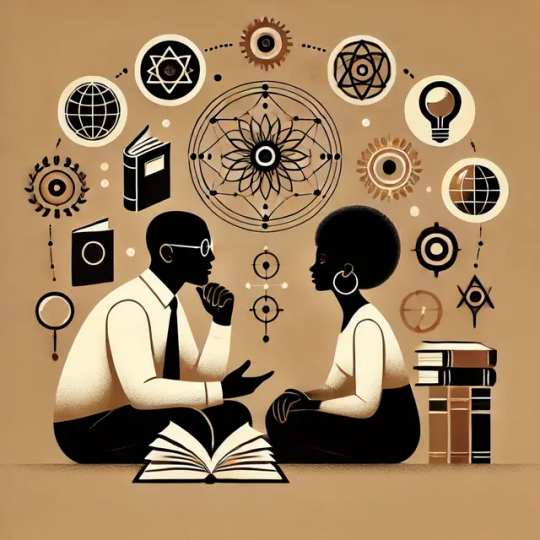
Why Consciousness Isn’t Seen as “Sexy” in the Black Community: A Garveyite Perspective on the Devaluation of Intellectualism and Liberation Thought
From a Garveyite perspective, the lack of appeal or desirability associated with consciousness—meaning intellectual awareness, political understanding, and Pan-African liberation thought—can be traced to a combination of Eurocentric conditioning, cultural miseducation, capitalist distractions, and the deliberate engineering of anti-intellectualism among Black people. Marcus Garvey’s philosophy was centered on knowledge as the foundation of Black power and self-determination, yet in today’s society, Black consciousness is often seen as boring, unattractive, or socially alienating rather than desirable or aspirational.
This deep analysis explores:
How Western conditioning has devalued Black consciousness and promoted superficiality.
Why capitalism, media, and entertainment industries prioritize distraction over empowerment.
The historical suppression of Black intellectualism and its impact on desirability.
Why true Black empowerment requires redefining attractiveness and desirability in alignment with liberation.
1. The Eurocentric Devaluation of Black Consciousness and Intellectualism
One of the greatest obstacles to Black consciousness being seen as “sexy” is centuries of Eurocentric indoctrination that have devalued Black intelligence while glorifying ignorance and superficiality. During slavery and colonial rule, Black people were deliberately kept from reading, writing, and engaging in political discourse, ensuring that they remained subjugated. This conditioning continued through the educational system, pop culture, and economic structures.
In modern times, Black people who speak about history, politics, self-determination, or Pan-Africanism are often labelled as “too serious,” “preachy,” or “boring.” This is not by accident but by design, as white supremacy thrives on an intellectually disengaged Black population.
Example: Historically, Black leaders like Marcus Garvey, Malcolm X, and Kwame Ture were demonized by the mainstream because their teachings threatened the existing power structure. At the same time, entertainers and sports figures were elevated, reinforcing the idea that entertainment, not critical thought, is what makes a Black person valuable or desirable.
Key Takeaway: Garveyism teaches that Black consciousness is the key to liberation, but Western society has worked hard to make it seem undesirable and unattractive.
2. The Role of Capitalism in Promoting Distraction Over Empowerment
Capitalism thrives on distraction, consumerism, and superficial desires, all of which directly contradict Black liberation. If Black people were collectively focused on self-reliance, Pan-African unity, and economic independence, multinational corporations would lose billions in profit because Black people would stop over-consuming entertainment, fashion, fast food, and other non-essential goods.
The capitalist system ensures that shallow and hyper-consumerist lifestyles are glorified, while revolutionary thought is pushed to the fringes. The result is that Black consciousness is not marketed as something desirable or aspirational, while materialistic lifestyles associated with wealth and status are heavily promoted.
Example: In today’s media, rappers and influencers are pushed to the forefront, promoting excessive wealth, luxury goods, and hypersexuality. Meanwhile, Black intellectuals, scholars, and activists receive little to no mainstream attention unless they can be commercialized or made non-threatening.
Key Takeaway: Garveyism warns against economic dependency, yet capitalism ensures that Black people remain disconnected from consciousness by keeping them addicted to consumerism and distractions.
3. The Historical Suppression of Black Intellectualism and Political Thought
Throughout history, Black intellectuals have been systematically suppressed, killed, or discredited to prevent the rise of a self-determined Black population. From the murder of Malcolm X and Fred Hampton to the FBI’s COINTELPRO program targeting Black intellectual movements, every effort has been made to ensure that Black people do not collectively gravitate toward consciousness.
If something is criminalized, demonized, or hidden from people, they will not view it as aspirational or desirable. In contrast, the things that white supremacist structures promote—celebrity culture, hypersexuality, and capitalist individualism—become what people aspire toward.
Example: The Black Panther Party focused on education, self-defense, and community programs, but the U.S. government labelled them terrorists while simultaneously celebrating pimp culture, drug dealing, and gang violence in mainstream media. This created a distorted perception where Black militancy and intelligence were made unattractive, while self-destructive behaviours were glorified.
Key Takeaway: Garveyism teaches that knowledge is power, but history has shown that those in power actively suppress Black intellectualism, making it seem undesirable and even dangerous.
4. Redefining Desirability: Why True Black Empowerment Must Make Consciousness Attractive
Garveyism teaches that a mentally liberated Black person is the foundation of a strong Black nation. If Black power, intelligence, and self-sufficiency were seen as desirable traits, the entire cultural and economic landscape of Black communities would shift toward empowerment rather than distraction.
The challenge, however, is that many Black people have been conditioned to associate attraction with superficial traits—money, social status, physical appearance—rather than intelligence, character, and purpose. This Eurocentric way of thinking must be rejected if true liberation is to occur.
Example: Historically, Black societies that valued knowledge, tradition, and leadership were able to build great empires and institutions. In contrast, societies that became obsessed with materialism, hyper-individualism, and social status collapsed due to external manipulation and internal decay.
A Garveyite approach would emphasize Black love, respect for intelligence, and a return to valuing mental and spiritual elevation over superficial attraction.
Key Takeaway: Garveyism teaches that for true Black empowerment, consciousness must become aspirational, attractive, and a measure of worth rather than material wealth or physical appearance.
Conclusion: Consciousness Must Be Made “Sexy” by Shifting Cultural Priorities
From a Garveyite perspective, consciousness is not seen as attractive or desirable because:
Western conditioning has devalued Black intellectualism and critical thinking.
Capitalism ensures that superficial distractions are prioritized over empowerment.
Historical suppression of Black political thought has made consciousness seem unappealing.
Modern definitions of desirability are based on Eurocentric values, not self-determination.
The solution is to change the culture so that Black consciousness is celebrated, rewarded, and made aspirational. This means:
Elevating Black intellectuals, revolutionaries, and Pan-African thinkers as role models.
Rejecting hyper-consumerism and distractions that keep Black people mentally enslaved.
Promoting self-reliance, collective empowerment, and political engagement.
Creating media, institutions, and relationships that value Black intelligence over superficiality.
Final Thought: Garveyism teaches that only mentally liberated Black people can achieve sovereignty. The challenge is not whether consciousness is “sexy,” but whether Black people are ready to deprogram from the systems that have made ignorance and materialism more desirable than liberation and intelligence.
#black history#black people#blacktumblr#black tumblr#black#pan africanism#black conscious#africa#black power#black empowering#blog#Garveyism#black consciousness#black liberation#Reclaim Our Minds#self determination#End Mental Slavery#blackness#pro black#black community#african diaspora#black diaspora#Black Intellectualism
157 notes
·
View notes
Text
Good News - July 22-28
Like these weekly compilations? Tip me at $kaybarr1735 or check out my new(ly repurposed) Patreon!
1. Four new cheetah cubs born in Saudi Arabia after 40 years of extinction

“[T]he discovery of mummified cheetahs in caves […] which ranged in age from 4,000 to as recent as 120 years, proved that the animals […] once called [Saudi Arabia] home. The realisation kick-started the country’s Cheetah Conservation Program to bring back the cats to their historic Arabian range. […] Dr Mohammed Qurban, CEO of the NCW, said: […] “This motivates us to continue our efforts to restore and reintroduce cheetahs, guided by an integrated strategy designed in accordance with best international practices.””
2. In sub-Saharan Africa, ‘forgotten’ foods could boost climate resilience, nutrition

“[A study published in PNAS] examined “forgotten” crops that may help make sub-Saharan food systems more resilient, and more nutritious, as climate change makes it harder to grow [current staple crops.] [… The study identified 138 indigenous] food crops that were “relatively underresearched, underutilized, or underpromoted in an African context,” but which have the nutrient content and growing stability to support healthy diets and local economies in the region. […] In Eswatini, van Zonneveld and the World Vegetable Center are working with schools to introduce hardy, underutilized vegetables to their gardens, which have typically only grown beans and maize.”
3. Here's how $4 billion in government money is being spent to reduce climate pollution

“[New Orleans was awarded] nearly $50 million to help pay for installing solar on low to middle income homes [… and] plans to green up underserved areas with trees and build out its lackluster bike lane system to provide an alternative to cars. […] In Utah, $75 million will fund several measures from expanding electric vehicles to reducing methane emissions from oil and gas production. [… A] coalition of states led by North Carolina will look to store carbon in lands used for agriculture as well as natural places like wetlands, with more than $400 million. [… This funding is] “providing investments in communities, new jobs, cost savings for everyday Americans, improved air quality, … better health outcomes.””
4. From doom scrolling to hope scrolling: this week’s big Democratic vibe shift

“[Democrats] have been on an emotional rollercoaster for the past few weeks: from grim determination as Biden fought to hang on to his push for a second term, to outright exuberance after he stepped aside and Harris launched her campaign. […] In less than a week, the Harris campaign raised record-breaking sums and signed up more than 100,000 new volunteers[….] This honeymoon phase will end, said Democratic strategist Guy Cecil, warning the election will be a close race, despite this newfound exuberance in his party. [… But v]oters are saying they are excited to vote for Harris and not just against Trump. That’s new.”
5. Biodegradable luminescent polymers show promise for reducing electronic waste

“[A team of scientists discovered that a certain] chemical enables the recycling of [luminescent polymers] while maintaining high light-emitting functions. […] At the end of life, this new polymer can be degraded under either mild acidic conditions (near the pH of stomach acid) or relatively low heat treatment (> 410 F). The resulting materials can be isolated and remade into new materials for future applications. […] The researchers predict this new polymer can be applied to existing technologies, such as displays and medical imaging, and enable new applications […] such as cell phones and computer screens with continued testing.”
6. World’s Biggest Dam Removal Project to Open 420 Miles of Salmon Habitat this Fall

“Reconnecting the river will help salmon and steelhead populations survive a warming climate and [natural disasters….] In the long term, dam removal will significantly improve water quality in the Klamath. “Algae problems in the reservoirs behind the dams were so bad that the water was dangerous for contact […] and not drinkable,” says Fluvial Geomorphologist Brian Cluer. [… The project] will begin to reverse decades of habitat degradation, allow threatened salmon species to be resilient in the face of climate change, and restore tribal connections to their traditional food source.”
7. Biden-Harris Administration Awards $45.1 Million to Expand Mental Health and Substance Use Services Across the Lifespan
““Be it fostering wellness in young people, caring for the unhoused, facilitating treatment and more, this funding directly supports the needs of our neighbors,” said HHS Secretary Xavier Becerra. [The funding also supports] recovery and reentry services to adults in the criminal justice system who have a substance use disorder[… and clinics which] serve anyone who asks for help for mental health or substance use, regardless of their ability to pay.”
8. The World’s Rarest Crow Will Soon Fly Free on Maui

“[… In] the latest attempt to establish a wild crow population, biologists will investigate if this species can thrive on Maui, an island where it may have never lived before. Translocations outside of a species’ known historical range are rare in conservation work, but for a bird on the brink of extinction, it’s a necessary experiment: Scientists believe the crows will be safer from predators in a new locale—a main reason that past reintroduction attempts failed. […] As the release date approaches, the crows have already undergone extensive preparation for life in the wild. […] “We try to give them the respect that you would give if you were caring for someone’s elder.””
9. An optimist’s guide to the EV battery mining challenge
““Battery minerals have a tremendous benefit over oil, and that’s that you can reuse them.” [… T]he report’s authors found there’s evidence to suggest that [improvements in technology] and recycling have already helped limit demand for battery minerals in spite of this rapid growth — and that further improvements can reduce it even more. [… They] envision a scenario in which new mining for battery materials can basically stop by 2050, as battery recycling meets demand. In this fully realized circular battery economy, the world must extract a total of 125 million tons of battery minerals — a sum that, while hefty, is actually 17 times smaller than the oil currently harvested every year to fuel road transport.”
10. Peekaboo! A baby tree kangaroo debuts at the Bronx Zoo

“The tiny Matschie’s tree kangaroo […] was the third of its kind born at the Bronx Zoo since 2008. [… A] Bronx Zoo spokesperson said that the kangaroo's birth was significant for the network of zoos that aims to preserve genetic diversity among endangered animals. "It's a small population and because of that births are not very common," said Jessica Moody, curator of primates and small mammals at the Bronx Zoo[, …] adding that baby tree kangaroos are “possibly one of the cutest animals to have ever lived. They look like stuffed animals, it's amazing.””
July 15-21 news here | (all credit for images and written material can be found at the source linked; I don’t claim credit for anything but curating.)
#hopepunk#good news#cheetah#extinct species#africa#nutrition#food#farming#gardening#pollution#climate#climate change#climate crisis#democrats#us politics#us elections#kamala harris#voting#recycling#biodegradable#technology#salmon#habitat#fish#mental illness#mental health#substance abuse#hawaii#electric vehicles#zoo
859 notes
·
View notes
Text
Pearl and Gem glance at each other. Then, as one, they glance back at Tango, who is, evidently, not Tango.
“Do we have an amnesiacold on our hands?” Gem asks.
“Maybe,” says Pearl, glancing back at Tango again. “Tango, buddy, you feeling alright?”
“I—” Tango opens his mouth. Closes it again. “I mean, I’m a little under the weather, to tell you the truth—I ate a South African sausage and it disagreed with me.”
Pearl hums. “And it’s messed with your memory a bit, right?”
“Yes! I mean, no—I mean, how did you—?”
“Would you say that you have a bit of an amnesiacold, Tango?” asks Gem.
“Amnesiacold?”
“You know. Amnesiacold!” Gem says. “When you get sick and forget everything and feel like somebody else?”
“Ah.” Tango pulls himself to shore. Frowns. “It’s more of an amnesia-food-poisoning, if I’m honest.”
Pearl winces. “Your poor digestive system.”
“It’s not very nice Pearl, I’ll tell you that much,” Tango says, voice low, one hand pressed against his stomach as he pulls a face.
“Okay, that’s enough, I don’t need to hear about your gut issues,” Gem interrupts. “But—you have an amnesiacold! You know, I was an amnesiacold last season.”
“You mean, you had an amnesiacold?”
“No, I was one.” Gem winks. “Like—Tango has an amnesiacold. But you? You’re the amnesiacold. You know?”
Tango’s shoulders hike up with discomfort. “I don’t know what you’re talking about. I’m Tango. And I think you guys should—should skadoodle somewhere else. Should bother-someone-else-ificate. Begone.”
“I had an amnesiacold last season, you know,” Pearl says. “Gem was one. You can tell us, buddy, we’re not gonna tell anyone.”
“Promise,” Gem says with a nod. “This is a safe space! You don’t have to pretend to be someone you’re not with us.”
Tango stares at them for a long, long moment, then sags, face falling. He looks exhausted, suddenly, and Pearl feels a rush of sympathy. It can’t be easy, being thrown into the game halfway through, with no context for anything.
“It’s been rough, dudes,” Tango says, voice cracking. “It’s been really really rough. I forgot how hard it was to get anything done on this server! There’s so much chaos, and—”
Wait.
“Ren?”
Not-Tango grins. “In the flesh,” he says with a bow of his head. “Or… not my flesh, exactly.”
“Ren?” Gem asks, tilting her head in confusion.
“Oh, that’s right, you’ve never met…”
Gem and Ren peer at each other for a moment. “You do look familiar,” Ren says eventually.
“Yeah,” Gem agrees. “I mean, obviously you look familiar—you look like Tango!—but… yeah.”
They stare at each other for a moment more.
“Maybe we met in a dream?” Ren says at last.
Gem nods. “Sure. Makes as much sense as anything else.”
Pearl glances between them, rocking awkwardly back on her heels. She clears her throat, drawing their attentions back to her. “Welcome back, buddy,” she says to Ren. “Good to see you again.”
“I wish that I could say the same,” Ren says morosely. “I thought I was—I was done, Pearl.” Now that she knows it's Ren, she can hear his cadence in Tango’s voice, voice dropping rough and low with drama as he bows his head. “I was done. No more games, not for the ol’ diggity dog. And now… Here I am!” He laughs a little, stretching out his arms to indicate the server at large. “In a body that’s not mine, in a world I’ve never seen, in a game I do not understand.”
“Oh, Ren…” Pearl frowns. She doesn’t know what to say.
Gem jumps in. “Hey, it’s okay! It’s just one session, you know? You can do one session!”
“I suppose I must.” Ren looks up at them, jaw tightening. “If I am here—I suppose I must.”
“I’d never been in any of these games before I was Cleo for a bit last season,” Gem says. “So you have an advantage there! And, hey—maybe you can come back next season, and we can meet for real?”
Ren shifts uncomfortably. There’s something heavy hanging about him, something Pearl can’t quite understand. She remembers the last time she’d seen him, skull caved in from the dripstone spike dropped on his head. She remembers her own amnesiacold, the exhaustion that had dragged at her before it had settled in, the memories that had plagued her and just wouldn’t go away. And she wonders—
Just how exhausted would you have to be that your body would have to leave as well as the rest of your self?
Just how sick would you have to be before you didn’t want to come back?
Still, Ren steadies himself. Quirks Tango’s mouth into a smile. “Maybe,” he says, meeting Gem’s gaze. “That would be nice, to meet for real.”
#secret life#spoilers#fanfiction#obligatory post-session ficlet time!#there was so much going on this session i could have gone with almost anything for this#but amnesiacolds is where we landed#this one is very much playing with martyn's lore which i think is very fun#also. i miss rendog when will he come back from the war ;-;#magpie feather quill
724 notes
·
View notes
Text
in addition to being prone to an obvious naturalistic fallacy, the oft-repeated claim that various supplements / herbs / botanicals are being somehow suppressed by pharmaceutical interests seeking to protect their own profits ('they would rather sell you a pill') belies a clear misunderstanding of the relationship between 'industrial' pharmacology and plant matter. bioprospecting, the search for plants and molecular components of plants that can be developed into commercial products, has been one of the economic motivations and rationalisations for european colonialism and imperialism since the so-called 'age of exploration'. state-funded bioprospectors specifically sought 'exotic' plants that could be imported to europe and sold as food or materia medica—often both, as in the cases of coffee or chocolate—or, even better, cultivated in 'economic' botanical gardens attached to universities, medical schools, or royal palaces and scientific institutions.
this fundamental attitude toward the knowledge systems and medical practices of colonised people—the position, characterising eg much 'ethnobotany', that such knowledge is a resource for imperialist powers and pharmaceutical manufacturers to mine and profit from—is not some kind of bygone historical relic. for example, since the 1880s companies including pfizer, bristol-myers squibb, and unilever have sought to create pharmaceuticals from african medicinal plants, such as strophanthus, cryptolepis, and grains of paradise. in india, state-created databases of valuable 'traditional' medicines have appeared partly in response to a revival of bioprospecting since the 1980s, in an increasingly bureaucratised form characterised by profit-sharing agreements between scientists and local communities that has nonetheless been referred to as "biocapitalism". a 1990 paper published in the proceedings of the novartis foundation symposium (then the ciba foundation symposium) spelled out this form of epistemic colonialism quite bluntly:
Ethnobotany, ethnomedicine, folk medicine and traditional medicine can provide information that is useful as a 'pre-screen' to select plants for experimental pharmacological studies.
there is no inherent oppositional relationship between pharmaceutical industry and 'natural' or plant-based cures. there are of course plenty of examples of bioprospecting that failed to translate into consumer markets: ginseng, introduced to europe in the 17th century through the mercantile system and the east india company, found only limited success in european pharmacology. and there are cases in which knowledge with potential market value has actually been suppressed for other reasons: the peacock flower, used as an abortifacient in the west indies, was 'discovered' by colonial bioprospectors in the 18th century; the plant itself moved easily to europe, but knowledge of its use in reproductive medicine became the subject of a "culturally cultivated ignorance," resulting from a combination of funding priorities, national policies, colonial trade patterns, gender politics, and the functioning of scientific institutions. this form of knowledge suppression was never the result of a conflict wherein bioprospectors or pharmacists viewed the peacock flower as a threat to their own profits; on the contrary, they essentially sacrificed potential financial benefits as a result of the political and social factors that made abortifacient knowledge 'unknowable' in certain state and commercial contexts.
exploitation of plant matter in pharmacology is not a frictionless or infallible process. but the sort of conspiratorial thinking that attempts to position plant therapeutics and 'big pharma' as oppositional or competitive forces is an ahistorical and opportunistic example of appealing to nominally anti-capitalist rhetoric without any deeper understanding of the actual mechanisms of capitalism and colonialism at play. this is of course true whether or not the person making such claims has any personal financial stake in them, though it is of course also true that, often, they do hold such stakes.
541 notes
·
View notes